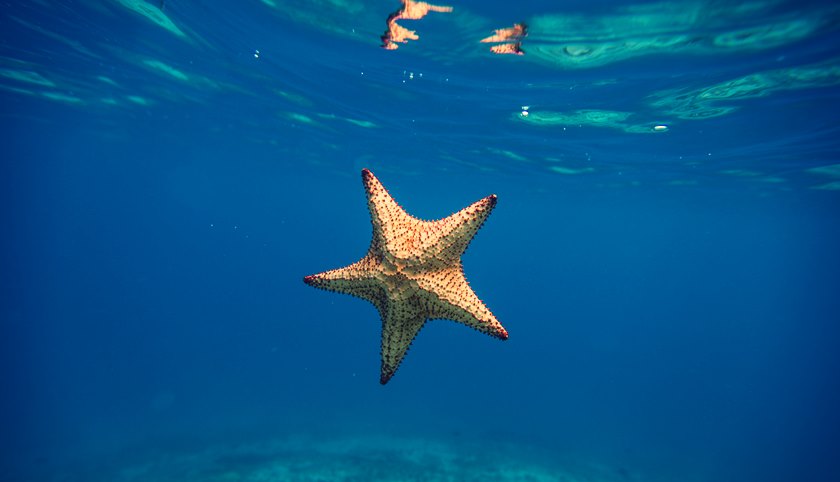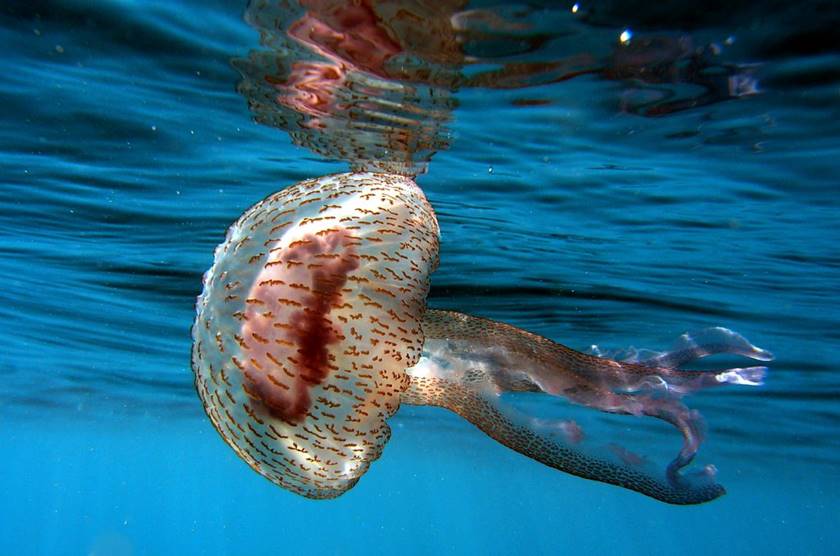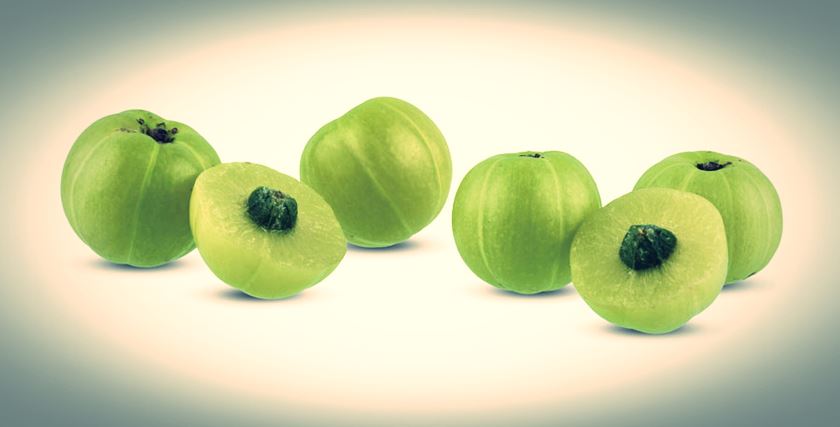
Conozca los síntomas y el tratamiento de las mordeduras de animales marinos como anémonas, corales, esponjas, erizos, pepinos y estrellas de mar.
En el mar encontramos invertebrados capaces de provocar lesiones cutáneas. Impactan a la población expuesta, pescadores, nadadores, surfistas, buceadores o bañistas.
Pueden ser muy frecuentes en la temporada de baño debido al aumento de la afluencia al mar, y provocar molestias y daños en la piel, a pesar de todo, las reacciones graves son muy raras.
En este artículo abordamos las dermatosis provocadas por mordeduras de animales marinos como erizos de mar, estrellas, esponjas o anémonas. Dermatología marítima para conocimiento de los que acuden ocasionalmente y mejora de los habituales.
Debemos recordar que primera medida En los primeros auxilios y tratamiento de picaduras en el mar, se trata de sacar a la víctima del agua, verificar que esté estable, dejarla en reposo y tranquilizarla.
7 mordeduras de animales marinos que debes saber
1 Dermatitis por anémonas o fideos de mar

• La Anémonas de mar Son animales marinos que se adhieren a las rocas o la arena.
• Las picaduras de anémona pueden causar dermatitis en pescadores de esponjas, bañistas, buceadores y personas que recolectan moluscos de huecos en las rocas.
• Sus tentáculos producen reacciones de urticaria con apariencia de ardor, enrojecimiento y picor cuando entran en contacto con la piel.
• El tratamiento se trata de retirar los tentáculos y aplicar vinagre en la zona.
• Se resuelve lentamente en 1-2 semanas.
2 Erupción del bañista

• Fue descrito por primera vez en 1949 en bañistas de Florida. Las áreas donde ocurre con mayor frecuencia son Florida, el Caribe, Bermudas y la costa noroeste de los Estados Unidos.
• Es causada por las larvas de una anémona (Edwarsiella lineata) que inyectan la toxina de forma directa en la piel.
• Suele producir lesiones en la zona del traje de baño y donde la ropa o los accesorios entran en contacto con la piel, reteniendo la larva en ella.
• Comienza con mucha picazón que se transforma en vesículas, pápulas y reacción de urticaria en la zona afectada que cede en una semana.
• El 10% de los pacientes pueden presentar síntomas sistémicos como malestar, fiebre o náuseas.
• El tratamiento es la retirada del bañador lo antes viable. Se pueden utilizar corticosteroides tópicos para reducir los síntomas posteriores.
3 Lesiones cutáneas por corales
3.1 Dermatitis de coral, coral del mar rojo o coral de fuego

• La dermatitis de coral en general es bastante inofensiva excepto en el caso del coral de fuego. Este coral está en Japón y en el Pacífico.
• Causada por Dendornephtya nipponica, una especie animal muy simple que parasita las langostas y libera nematocistos (larvas) que irritan la piel.
• Afecta a los pescadores de septiembre a abril en forma de urticaria, ampollas, rinitis y conjuntivitis. Además puede afectar a los bañistas.
• Las mordeduras de animales marinos, como los corales, deben enjuagarse con agua de mar. Al mismo tiempo, se deben borrar los nematocistos que no se hayan descargado.
• El área de la picadura se puede cubrir con una compresa de vinagre o alcohol diluido al 40-70% durante 15 a 30 minutos hasta que se alivie el dolor. Además se pueden usar compresas de agua de mar lo más calientes viable para inactivar nematocistos. Después, se puede aplicar una crema con corticosteroides.
3.2 Desgarros o heridas de coral y su tratamiento:
• Son producidos por sus exoesqueletos afilados y tardan un tiempo notable en sanar. Además disponen un mayor riesgo de infección.
• El tratamiento se trata de una limpieza profusa de la herida con agua y jabón. Dependiendo del tipo de herida, se puede considerar coserla y además se debe considerar la vacuna contra el tétanos.
4 erizos de mar

• Viven en el suelo, cerca de las costas de todo el mundo.
• Las picaduras de animales marinos como los erizos suelen causar daños en el mar.
• Contienen púas afiladas que a veces pueden contener veneno, lo que además produce una reacción local.
• Las púas se clavan en la piel y las más pequeñas pueden tener acceso.
• El tratamiento se trata de borrar las espinas que se puedan hacer y lavar la zona con alcohol o antisépticos:
– Las espinas son muy frágiles y algunas rompen la piel y no se pueden borrar.
– No se deben realizar más intentos fuera del ambiente sanitario y los que queden introducidos en la piel se reabsorberán con el tiempo.
– En las púas grandes, se puede usar una radiografía para confirmar que no afecta a las articulaciones ni a los tendones.
– Se debe considerar la vacuna contra el tétanos y de forma general no necesita antibióticos preventivos.
– Las púas de erizo de color marrón oscuro pueden dejar la piel pigmentada. Esta pigmentación se desvanece con el tiempo.
5 estrellas de mar

• No suelen dañar a los bañistas.
• A pesar de todo, el contacto con la estrella de mar “Corona de espinas” localizada en la Gran Barrera de Coral puede ser muy dañino.
• Produce diversos heridas punzantes con sus espinas que son capaces de penetrar el neopreno.
• El tratamiento es equivalente al de las picaduras de animales marinos como el erizo de mar. Las espinas deben eliminarse siempre y cuando sea viable y se debe considerar la vacunación contra el tétanos.
6 pepinos de mar

• Viven en el fondo del mar y producen una toxina en su superficie.
• El contacto puede causar dermatitis irritativa y conjuntivitis.
• El tratamiento incluye el lavado inmediato con agua tibia con o sin jabón, vinagre o alcohol.
7 Lesiones cutáneas por esponjas

7.1 Dermatitis por espículas esponjosas
• Las esponjas viven en el fondo del mar y algunas pueden tener espículas capaces de causar dermatitis irritativa o abrasiones menores.
• La reacción aparece en minutos.
• El tratamiento se trata de la eliminación de las espículas con cinta adhesiva o esparadrapo. Algunos autores recomiendan aplicar arena de la playa de la zona para inactivar las espículas.
7.2 Dermatitis por esponja tóxica
• Descrito en al menos 13 especies, ninguna de ellas se encuentra en nuestras costas.
• Se produce al tener acceso en contacto con un veneno que disponen en su superficie.
• Produce síntomas locales graves en 24 horas en forma de hinchazón, ampollas y dolor.
• El tratamiento se trata de lavar la zona, aplicar vinagre y poner compresas frías.
References
1 Tlougan BE, Podjasek JO, Adams B. Dermatosis de deportes acuáticos. Parte 2. En el agua: dermatosis de agua salada. Int J Dermatol 2010; 49: 994-1002.
2 Reckziegel GC, Dourado FS, Garrote-Neto, et al. Lesiones causadas por animales acuáticos en Brasil: un análisis de los datos presentes en el sistema de información de enfermedades notificables. Rev Soc Bras Med Trop 2015; 48: 460-467.
Te invito a compartir este post para que otras personas conozcan los síntomas y el tratamiento de las mordeduras de animales marinos como Anémonas, Corales, Esponjas, Erizos, Pepinos y Estrellas de Mar.







